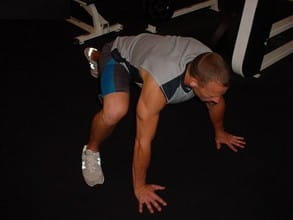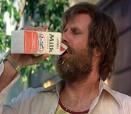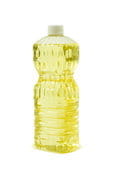How would you feel if you discovered that almost everything you were doing with building muscle was dead wrong? Imagine all the time, money and effort you have spent in the gym was contributing to building muscle – the wrong way! Everything you have read on building muscle has left you with little to show for your hard earned efforts...
There are dozens of muscle building mistakes that we all fall victim to which results in bringing you progress to a complete halt. Don't be too hard on yourself, because like all things in life, building muscle is a learning process. That does not mean you must forfeit years of personal trail and error when we can learn the mistakes of seasoned trainers who walked before us.
If Your Still Stuck With The Same Weak and Skinny Body...
It's Not Your Fault
You have been mislead and down right lied to by some of the most successful masters of deception alive today. You are probably not even aware that the bodybuilding industry is robbing you of your hard-earned efforts, it's embarrassing your commitment and motivation, and most importantly, it's stealing your money, and crushing the results you should be getting at the gym.
In my search for honest, unbiased, time-tested muscle building information I discovered some hard-to-accept information. Looking back, I now realize that this information was a major turning point in my journey to building muscle the right way. BUT...I had to reprogram my belief system.
Here are the first three biggest and baddest ways to building muscle the wrong way. Erase these mistakes from your thought process and you will be one step closer to earning beach body worthy status:
Building Muscle The Wrong Way #1 – Skipping Out On Your Cardio...
Before you disagree take note that I was once a long distance triathlon and running champion so my cardiovascular standards and perceptions of 'fit' are much higher than your local trainers or expert bodybuilding author. It drives me crazy when I hear fitness experts preaching that weight training is just as good for keeping your heart and lungs in prime condition. Who are they kidding?
Weight training, designed for bodybuilding, is almost useless for stimulating your cardiovascular system. Bodybuilding style weight training for your cardio is just about as good as spending the day playing video games. Sure, I know your leg training workouts and super sets make you feel like you sprinted up the street for 100 m but this is far cry from a optimal cardio system.
Do not buy into the latest fad that cardio will kill any chance of building muscle. Cardio must be in your program even if your goal is maximal muscle gain and you are the skinniest of skinny. Aerobics plays a vital role in building muscle and has been shown to speed up recovery from weight training by transporting oxygen and blood flow to the muscles.
The circulatory system is developed because more oxygen is pushed through your blood resulting in a greater number and size of blood vessels. Since there is a greater cardiovascular density of blood vessels, your circulatory system has more 'supply routes' to shuttle oxygen and nutrients to the body tissues, including muscles, and shuttle away waste products that can slow muscle growth, repair and recovery. In the end, this means you will create a more optimal environment for building muscle!
Building Muscle The Wrong Way #2 – Overtraining The Biceps And Triceps
I'll bet any money that you would do almost anything for a set of sleeve-stretching set of arms. Any money that you would do almost anything for a pair of bulging biceps and rock-hard triceps!
Interestingly, every time I 'm at my gym, I see small and weak dudes spending a full hour doing every bicep and tricep exercise imaginable. They do set-after-set, week-after-week with nothing to show but the same skinny noodle arms. What they fail to realize is that for maximum muscle growth and strength, the biceps and triceps require very little direct stimulation!
Do me a favor and take a close close at the size of your thigh. Now compare the size of your thigh to the size of your bicep. Does it make sense to spend the same amount of time training arms versus your legs when your legs are over four times as big? Of course not! Now compare the overall size of your back to the overall size of your arms. Now compare the size of your overall chest to the size of your overall arms. You should now realize that a larger muscle group should be trained differently than a smaller muscle group.
Focus the majority of your training on the large muscle groups – that is chest, back, shoulders and legs. Focus on increasing the strength and size in these big muscle groups and rest assured, building muscle in your arms will become easier.
Now hear me out. I'm not saying that direct arm training is a waste. I'm simply leading you to discover that less is often more when training small muscle groups such as your bi's and tri's.
Building Muscle The Wrong Way #3 – Not Focusing On Getting Stronger
I can't count how many times I have down a fitness consultation with a young new trainee and bring up the idea of including a strength cycle early in the program and he instantly fires back, "But I don't care about how much I can lift, I just want to get ripped and muscular."
I get his short attention span back by stating, "Building muscle will almost always follow if you simply focus on getting stronger, I mean getting really stronger." Unfortunately, training to get stronger seems to no longer be apart of the average trainees training regime.
Since the fitness industry has become more commercialized with balls, balance pads, fancy selectorized equipment and ridiculous infomercials, people have neglected the necessary time building requirements to build a solid foundation for long term success. Including bodybuilders.
Consider that the stronger you become the more sets and reps you will be able to lift for more specialized movements. The better your technique. The faster your recovery. The longer and harder you will be able to train. And rest assured, when you get stronger from week to week, the muscle mass will follow!
Don't believe me? Next time you go to your gym check out who the biggest guys are. Don't be surprised if they are also the strongest. Have you ever seen anybody will a small frame who can deadlift four plates, squat three plates, bench press two plates or curl 1 plate (per side respectively). I didn't think so.
Building Muscle The Wrong Way #4 – Reading Bodybuilding Magazines
Did your last bodybuilding magazine promised 2 inches on your arms in 2 weeks? Did it tell you could increase your strength by 40% in one week? Did it show you the latest 'arm program' which looked the exact same as last months arm workout? I know this sounds extreme, but almost 90% of the information you see in bodybuilding magazines is dead wrong and only works for guys who are using steroids.
The modern mainstream bodybuilding magazines are really just muscle comic books written at a 6th grade level. They glorify drug-using bodybuilders and portray them as the picture of health. The cleverly combine two or three rehashed articles, a lot of pictures, gimmicks, sex and hype to sell this nonsense to millions. These magazines may have inspired millions by the pictures but they have also mislead millions.
Building Muscle The Wrong Way #5 – Taking Advice From A Guy Who Uses Drugs
Drugs allow you to train more often because of one's increased ability to recover, but they also speed up normal physiological processes that normally would not occur, i.e. increased hormonal levels. Not only do bodybuilders take an ENORMOUS amount of drugs; they are also known to inject various substances into their bodies to give selected body parts that enhanced look.
Building Muscle The Wrong Way #6 – Trusting The Supplement Ads
Most are unaware that bodybuilding magazines are owned by million dollar supplement companies that use the magazine as a vehicle to sell their supplements. They intentionally get professional bodybuilders to make programs that will cause the Average Joe with average genetics to literally fail. Because the programs are printed in black and white, the trusting consumer believes the advice must be right, and resorts to the latest cutting edge supplement promoted on the next page! The sale has been made.
Building Muscle The Wrong Way #7 – Following The Bodybuilding Programs
How would you also like to know that many of the articles in the popular muscle magazines are ghost written! Yep, many times the staff writers of a certain magazine will simply get the approval of a certain bodybuilder to use their name in an article they write. So, sometimes you will not even be reading an article that was actually written by your favorite bodybuilder.
Stop Taking Advice From Bodybuiding Magazines...
Once skinny guys discover there are no short-cuts or secrets, just time-tested, universal muscle building principles that are not as complicated as perceived, but work for anyone who applies them - then they will begin to build an impressive physquie and conquer their perceived unfriendly genes. You must learn to train smarter and not harder.
The training programs in these magazines are heavily influenced by professional bodybuilders who are on a lot of drugs, let us not pretend otherwise. Yes, other sports also are guilty of using drugs to enhance performance, but possibly no other sport is so dependent on the use of drugs than bodybuilding.
Your Solution : Take Advice From Someone Like You...
If you goal is to become huge and ripped naturally - you need to get advice from someone who has been in your own shoes. Would you take money advice from someone who inherited a million dollars? Probably not. So why would you take muscle building advice from someone who inherited genetics that makes him grow muscle even when he sneezes?
I have no idea either!
weight control diets weight control plan weight control plans weight control product weight control products weight control program weight control programs weight control services weight control software weight control tips weight diet plan weight diet plans weight diet program weight diet programs weight dieting weight diets weight exercise plan weight exercise program weight exercise programs weight gain diet weight gain diet plan weight gain diet plan for men weight gain diet plans weight gain diet program weight gain diets weight gain diets for men weight gain meal plan weight gain plan














 The best way to do this is to eliminate them both for 2 full weeks, and then reintroduce one at a time so that you can determine if one of them or both wheat and dairy are causing negative health effects for you.
The best way to do this is to eliminate them both for 2 full weeks, and then reintroduce one at a time so that you can determine if one of them or both wheat and dairy are causing negative health effects for you.


 Have you been lied to about the health benefits of canola oil?
Have you been lied to about the health benefits of canola oil?




